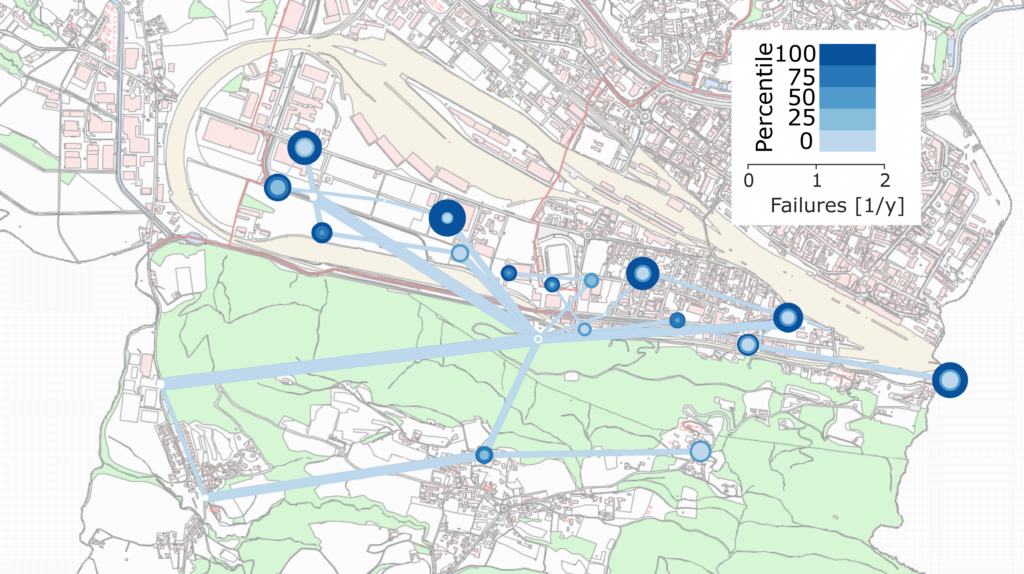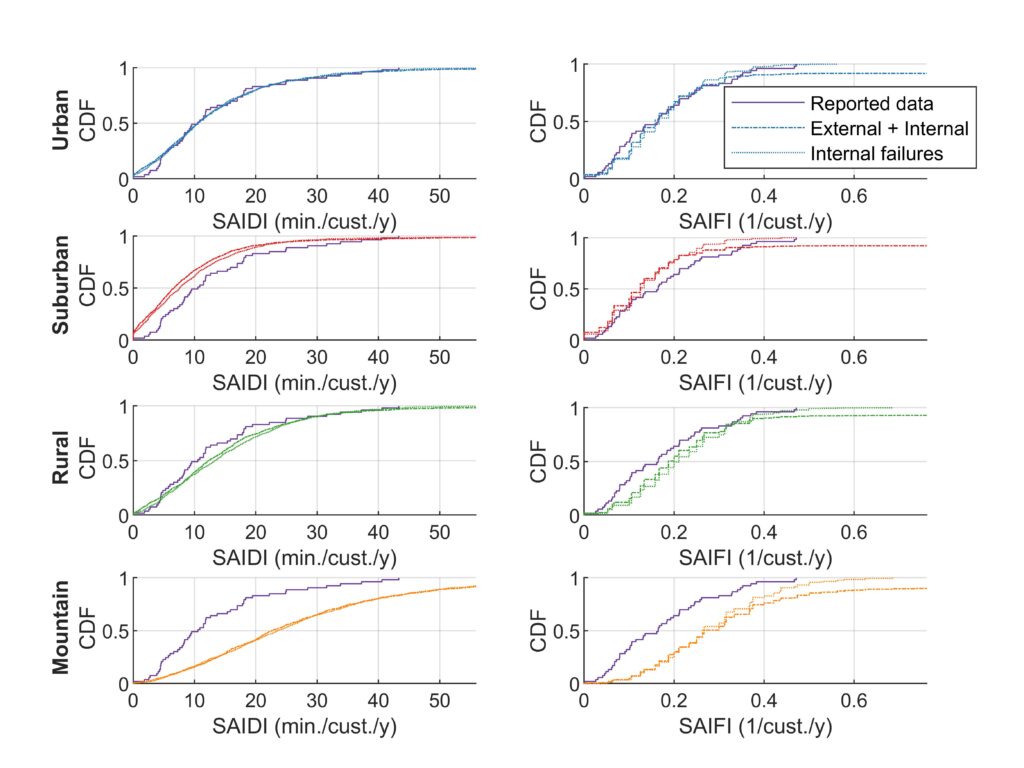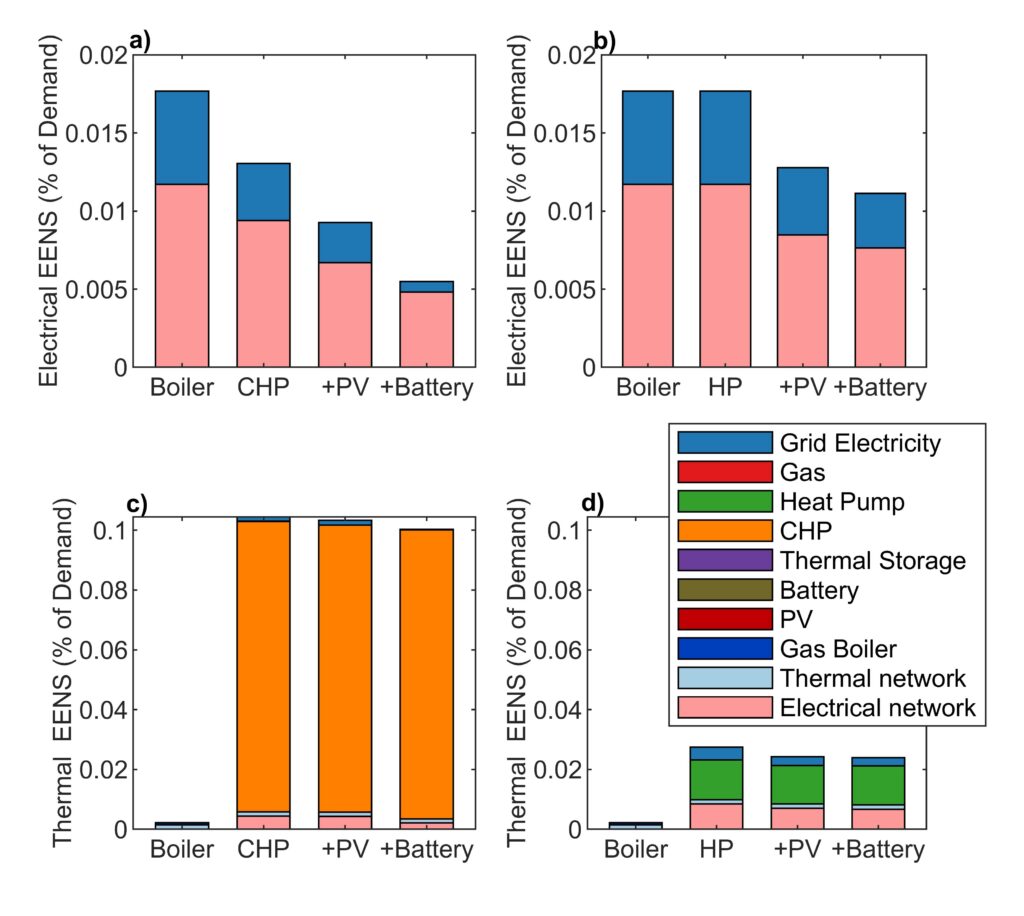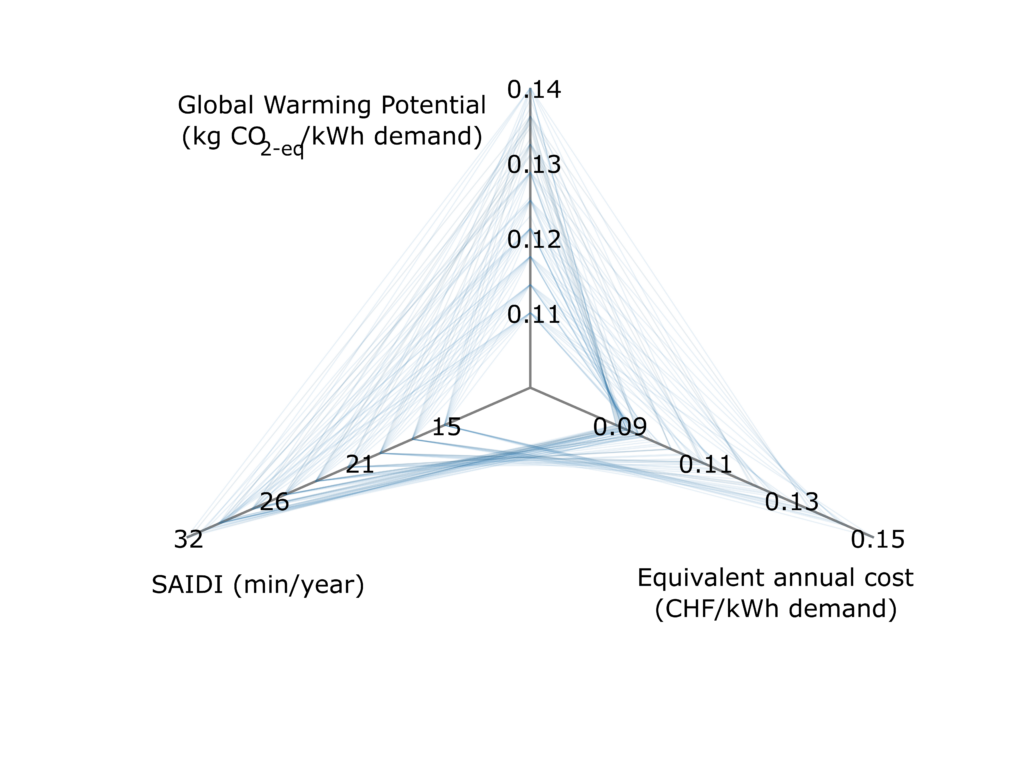Projects
Assessment and design of reliable, decentralized multi-energy systems

Decentralized and multi-energy distribution systems can improve the reliability and resilience of energy supply. However, such systems feature increased complexity and interdependences. ReMaP Task 3.3 quantifies and optimizes the reliability benefits of neighborhood multi-energy systems, mitigating disturbance propagation between energy carriers, conversion technologies, as well as the energy infrastructure.
First, the failure and repair behavior of Swiss electricity distribution networks is reproduced in ReMaP neighborhood electricity networks by combining Monte Carlo Simulation with probability distribution-based parameter tuning. The high reliability of Swiss electricity supply is reflected in the low frequency and duration of failures within and outside the neighborhood network. However, significant regional differences are observed. Mountainous networks are subject to power outages with a 54% higher frequency and 65% longer average duration than urban networks.

Comparison of reported (solid lines) and modelled (dashed lines) System Average Interruption Duration Index (SAIDI, left) and System Average Interruption Frequency Index (SAIFI, right) for different Swiss regions.
Second, the reliability of electricity- and gas-based neighborhood multi-energy systems is assessed using data from the Empa ehub/NEST demonstrator. While introducing battery storage and photovoltaic generation reduce the expected electricity not supplied by 37-69%, coupling energy vectors with heat pumps and combined heat and power plants introduces new interdependencies with trade-offs between thermal and electrical reliability.

Electrical (a-b) and thermal (c-d) expected energy not supplied (EENS) for the gas (a,c) and electricity (b,d)-based designs of a ReMaP neighborhood multi-energy system.
Third, the optimal design of active electricity distribution networks and microgrids is investigated. Using an energy trilemma perspective, the trade-offs between economy, reliability and sustainability are shown for active distribution systems. With a sensitivity and uncertainty analysis reflecting worldwide distribution network conditions, we investigate favorable conditions and drivers in the transition to active distribution networks and microgrids.

Optimal energy trilemma trade-offs between reliability (SAIDI), sustainability (Global warming potential), and economy (equivalent annual costs) in a Swiss active distribution network.
Finally, the impacts and benefits of active distribution networks and multi-energy systems on their hosting networks are quantified. Using the ReMaP Simulation Framework, we investigate how the challenges of volatile renewable generation and load increase due to electrification can be met with distributed flexibility offered active distribution networks.
Please contact Raphael Wu and Giovanni Sansavini for further information.
